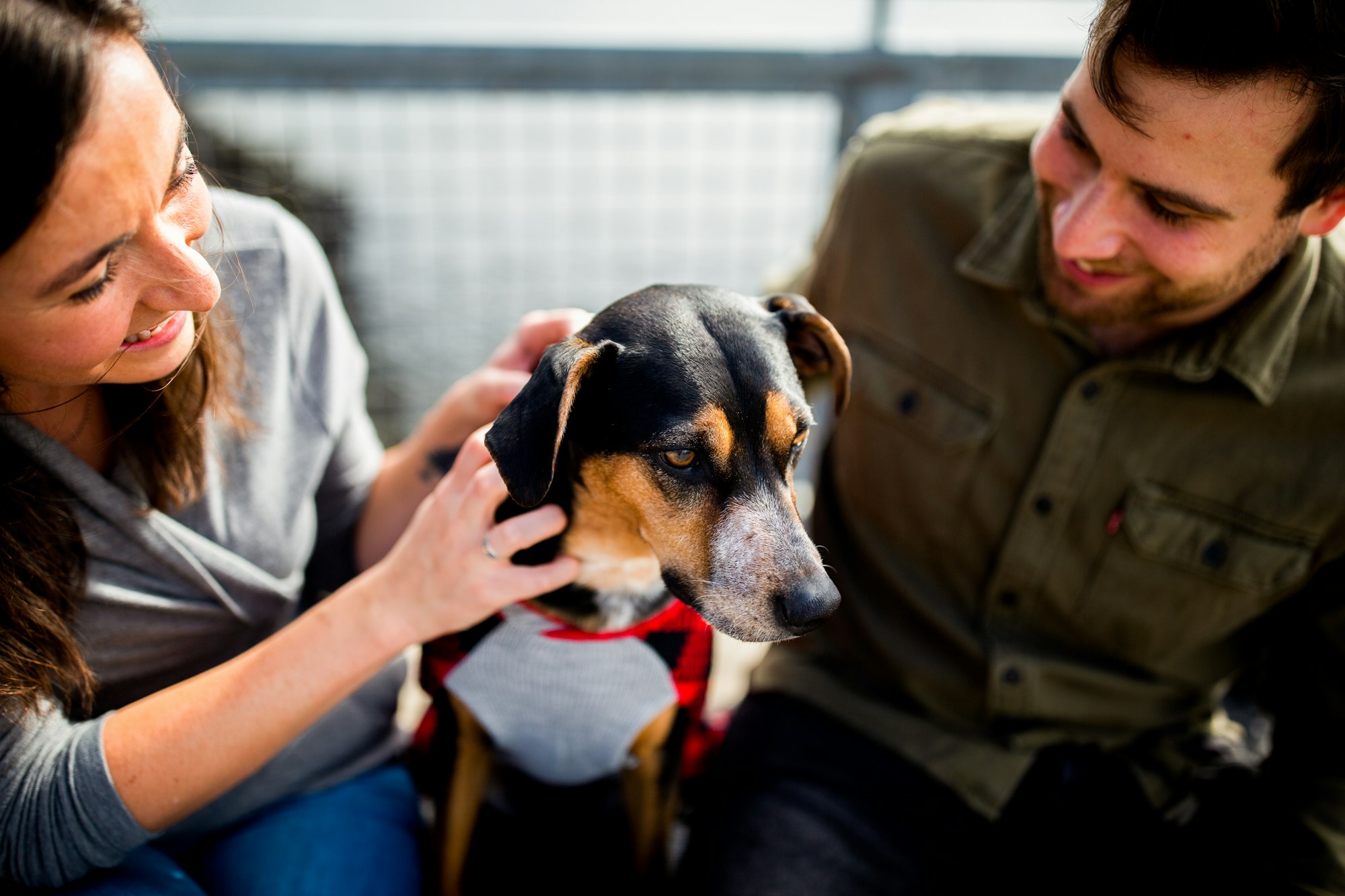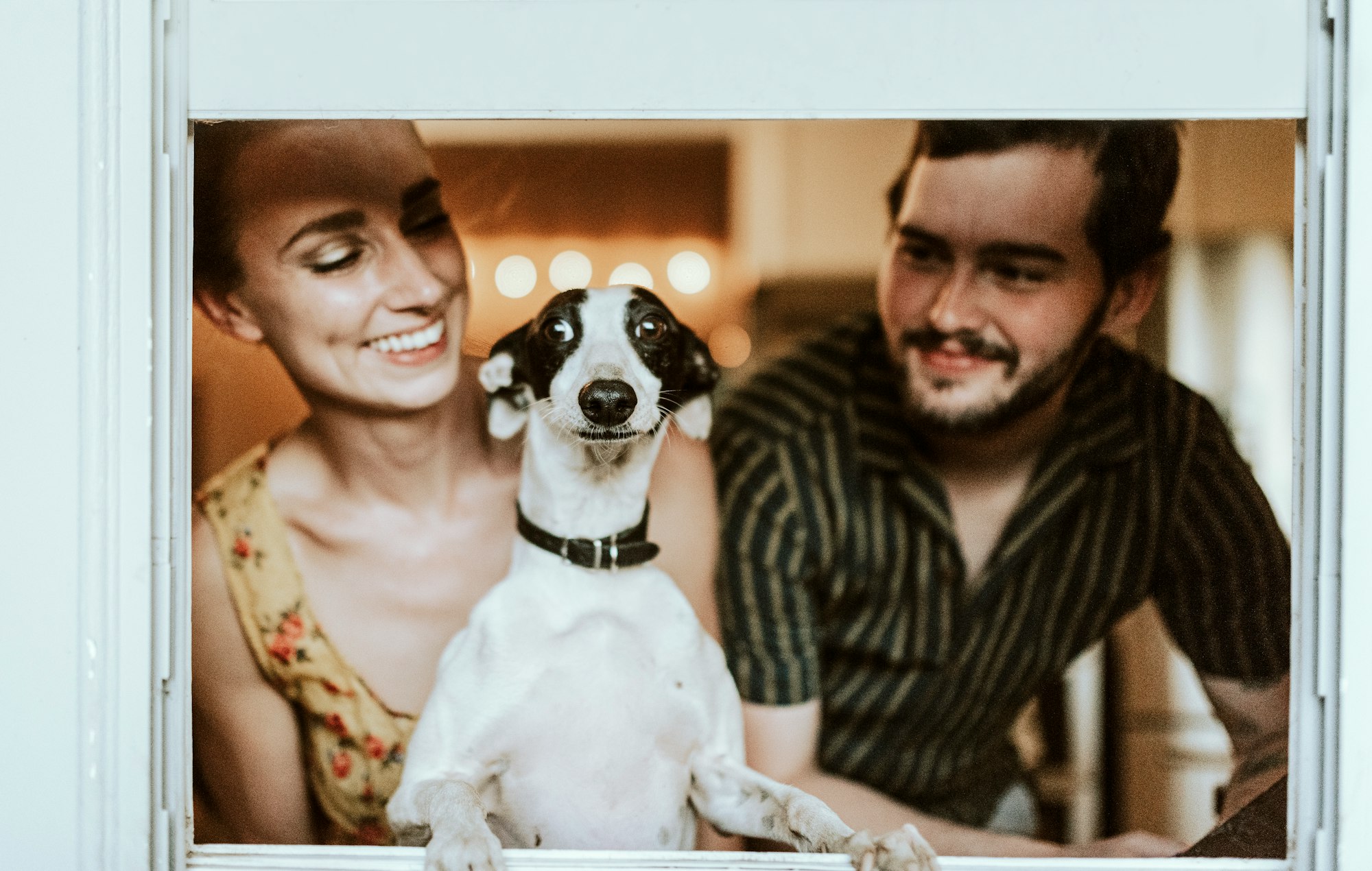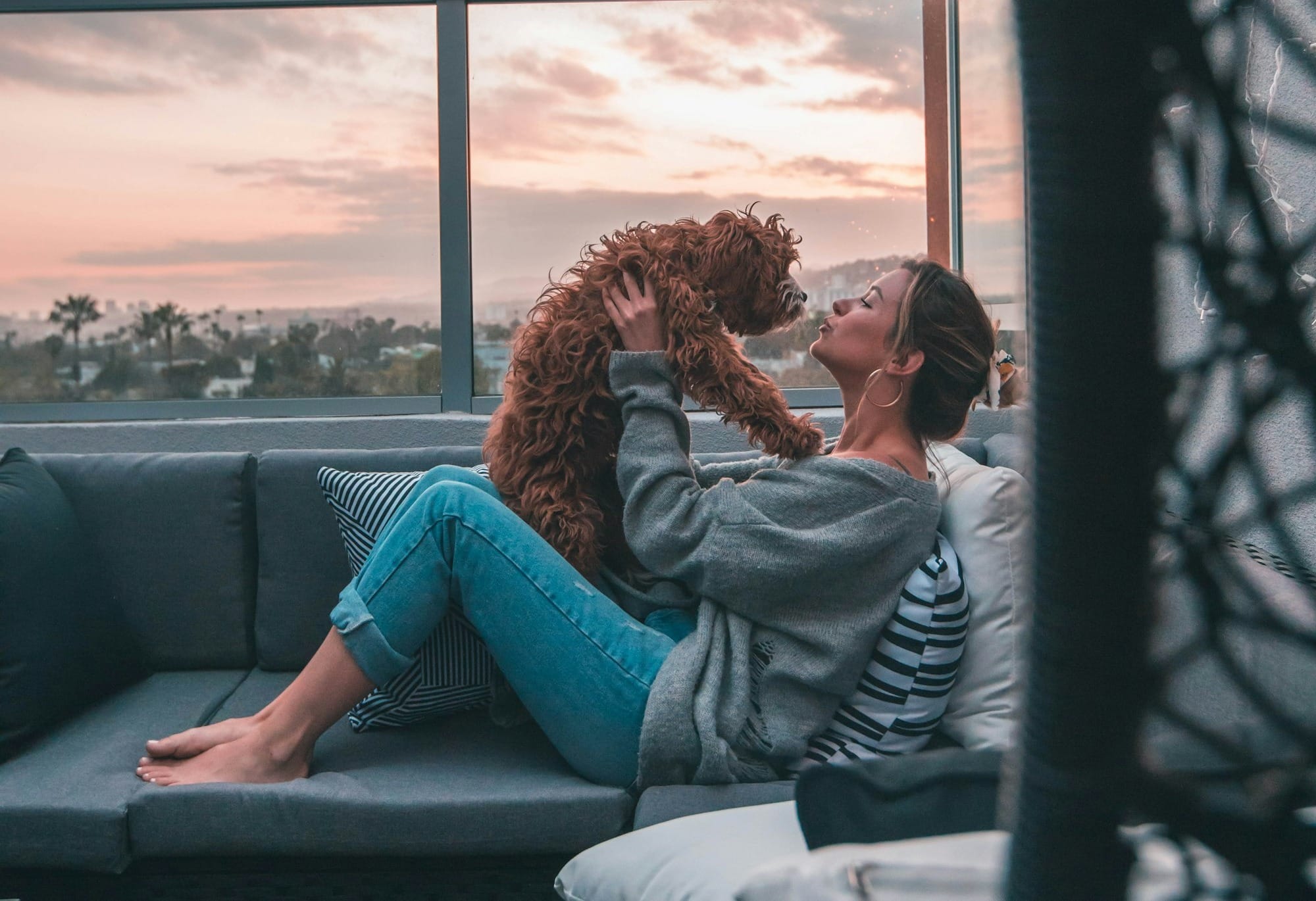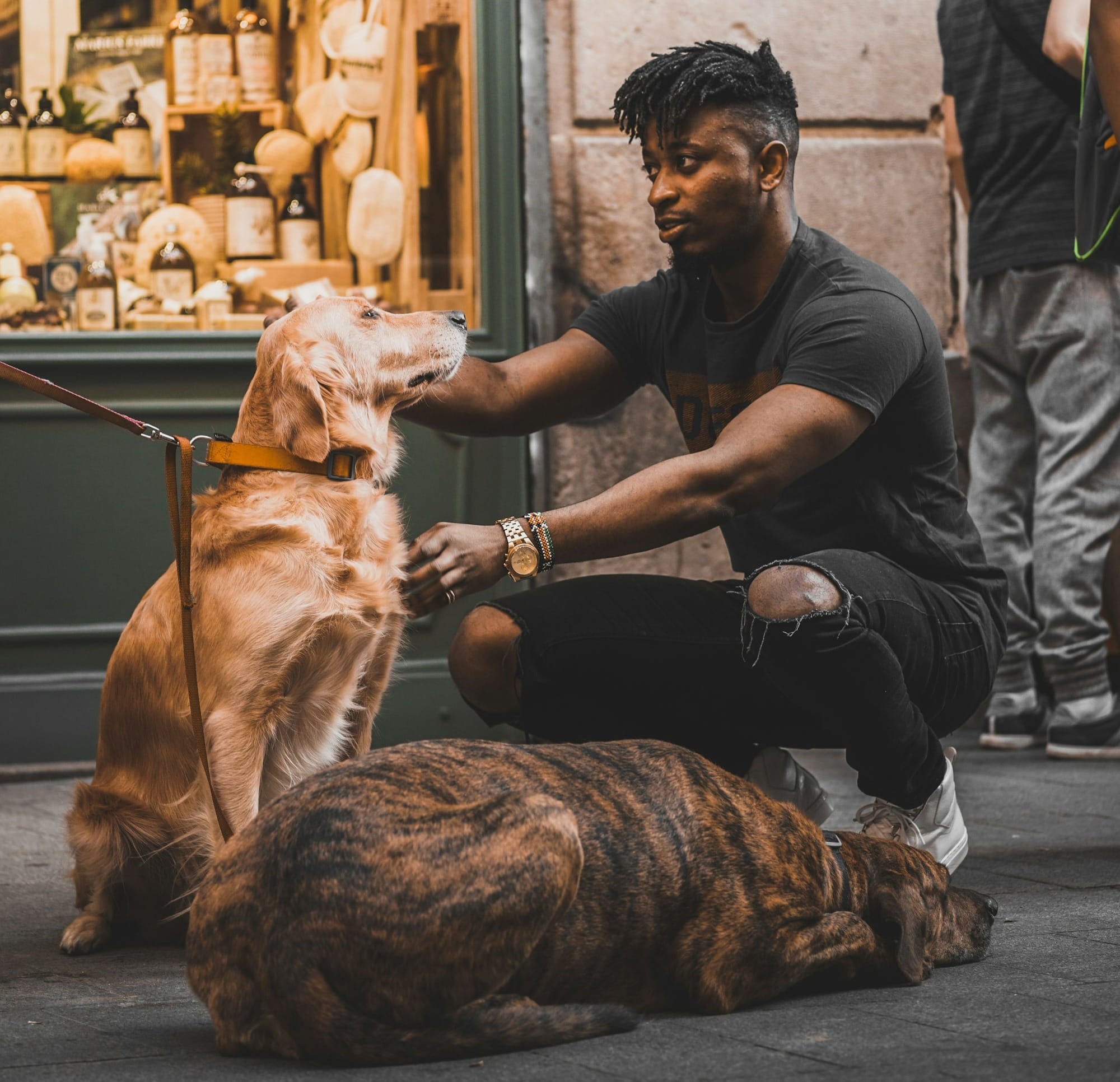Introducing dogs to one another can be a daunting task, especially if either dog has a history of aggression or fear. However, with the right approach and some patience, it is possible to successfully introduce dogs and help them form a positive relationship.

One important factor to consider when introducing dogs is their individual personalities and temperaments. Some dogs are naturally more social and outgoing, while others may be more reserved or even fearful. It's important to take these differences into account and adjust the introduction process accordingly.
Another key factor is the environment in which the introduction takes place. It's best to choose a neutral location, such as a park or other public space, where neither dog feels territorial. It's also important to ensure that both dogs are on leashes and under control at all times, to prevent any potential conflicts. By taking these steps and approaching the introduction process with care, it's possible to help dogs form positive relationships with one another.
Understanding Dog Behavior
Dogs are social animals and have a complex way of communicating with each other. Understanding dog behavior is essential when introducing dogs to each other. In this section, we will discuss canine body language and signs of stress and anxiety.
Canine Body Language
Dogs communicate with each other through body language. Understanding their body language is crucial when introducing dogs to each other. Here are a few things to look for:
- Ears: When a dog's ears are up and forward, it indicates that they are alert and interested. If the ears are back, it suggests the dog is nervous or scared.
- Tail: A wagging tail does not always mean a happy dog. A high, stiff tail indicates a dominant or aggressive dog, while a low tail suggests a submissive dog.
- Staring: Direct eye contact is a sign of aggression in dogs. If a dog is staring at another dog, it may be a sign of a potential fight.
- Barking: Dogs bark for various reasons, including excitement, fear, or aggression. It's essential to understand the context of the barking to determine the dog's intentions.
Signs of Stress and Anxiety
Dogs may exhibit signs of stress or anxiety when introduced to a new dog. Here are a few things to look for:
- Nervousness: A nervous dog may pant, drool, or pace.
- Hair standing up: When a dog's hackles are up, it indicates that the dog is scared or aggressive.
- Aggression: Growling, snarling, or snapping are signs of aggression in dogs.
It's crucial to monitor the dogs' behavior closely when introducing them to each other. If any of these signs appear, it's best to separate the dogs and try again later.
Preparing for the Introduction
Introducing dogs requires careful planning and preparation to ensure a smooth and stress-free experience for both dogs. In this section, we will discuss two important aspects of preparing for the introduction: choosing the right location and initial separation.
Choosing the Right Location
When introducing dogs, it is important to choose the right location. The location should be neutral territory, such as a quiet street or a fenced area, where neither dog has established ownership. It is not recommended to introduce dogs in one of the dog's homes, as this can lead to territorial behavior and aggression.
If the introduction is taking place in the home, it is important to create a neutral space for the dogs to meet. This can be achieved by crating one of the dogs or using a baby gate to separate them. It is also recommended to keep the introduction in a quiet room with minimal distractions.
Initial Separation
Initial separation is an important step in introducing dogs. It allows the dogs to become familiar with each other's scent without direct contact, which can help reduce the risk of aggression.
One way to achieve initial separation is to keep the dogs in separate rooms with the doors closed. This allows them to hear and smell each other without the risk of physical contact. Another option is to use a baby gate to separate them in the same room.
It is also recommended to crate one or both of the dogs during the initial separation period. This can help reduce anxiety and prevent any aggressive behavior.
By following these steps, owners can prepare for a successful introduction between dogs. Remember to take the process slowly and carefully, and always prioritize the safety and well-being of the dogs.
Introducing Dogs Step by Step
Introducing dogs can be a tricky process that requires patience and careful planning. Here are some steps to follow when introducing two dogs for the first time.
First Meeting on Neutral Ground
The first step is to introduce the dogs on neutral ground. This means choosing a location that is unfamiliar to both dogs, such as a park or a quiet street. Both dogs should be leashed and under control at all times.
It's important to keep a safe distance between the dogs initially, allowing them to sniff and get used to each other's presence. The owners should remain calm and neutral, avoiding any sudden movements or loud noises that could startle the dogs.
Walking Together
Once the dogs have had a chance to sniff each other, they can be walked together on parallel leashes. This means walking in the same direction, but at a safe distance from each other. The owners should remain focused on their own dog, rather than the other dog.
During the walk, it's important to keep the dogs moving and avoid letting them stop and stare at each other. This can create tension and increase the risk of a negative interaction.
Supervised Interaction
After the initial walk, the dogs can be allowed to interact under close supervision. This should be done in a controlled environment, such as a fenced yard or a quiet room.
Both dogs should still be leashed during the interaction, with the owners ready to intervene if necessary. It's important to allow the dogs to interact at their own pace, without forcing them to interact if they're not comfortable.
If the dogs seem to be getting along, they can be allowed to interact off-leash under close supervision. However, it's important to remember that even dogs that seem to be getting along can have sudden disagreements, so it's important to remain vigilant at all times.
By following these steps and being patient, owners can help their dogs form positive relationships with each other.

Post-Introduction Period
After introducing dogs, it is important to continue monitoring their interactions and body language during the post-introduction period to ensure they are getting along and are comfortable with each other. This section will cover two important aspects of the post-introduction period: monitoring body language and interactions and creating a positive shared environment.
Monitoring Body Language and Interactions
During the post-introduction period, it is crucial to supervise the dogs' interactions and monitor their body language to ensure they are getting along. Some signs of discomfort or aggression to watch out for include growling, snapping, raised hackles, and stiff body posture. If any of these signs are observed, it is important to separate the dogs and try again later.
It is also important to supervise any play between the dogs and ensure that it is safe and comfortable for both of them. If one dog seems to be dominating the play or is becoming too rough, it may be necessary to intervene and redirect their attention to something else, such as a toy or treat.
Creating a Positive Shared Environment
In addition to monitoring their interactions, it is important to create a positive shared environment for the dogs during the post-introduction period. This can include providing each dog with their own food bowls, toys, and walking routine to prevent any potential conflicts.
It is also important to provide positive reinforcement for good behavior, such as giving treats when the dogs are playing nicely together or showing affection towards each other. This will help to reinforce positive interactions and encourage the dogs to get along.
Overall, the post-introduction period is an important adjustment period for dogs to get used to each other and their new environment. By monitoring their interactions and creating a positive shared environment, owners can help ensure that their dogs get along and feel comfortable in their new family dynamic.
Managing Resources and Space
Introducing dogs requires careful management of resources and space to avoid potential conflicts. Here are some tips on how to manage these factors:
Feeding and Toys
During the introduction phase, it is best to feed the dogs separately to avoid any resource guarding behavior. Place the food bowls in different areas of the house and supervise the dogs while they eat. If one of the dogs finishes their food first, remove the bowl to prevent any issues.
Toys can also be a source of conflict between dogs. Provide each dog with their own set of toys and avoid leaving them out when the dogs are unsupervised. If one dog shows possessive behavior over a particular toy, remove it and provide an alternative.
Personal Spaces and Crates
Dogs need their own personal space where they can retreat to when they feel overwhelmed or need some alone time. Provide each dog with a designated area, such as a crate or bed, where they can relax without being disturbed by the other dog.
Crates can also be a useful tool when introducing dogs. Place the crates in separate areas of the house and allow each dog to explore and get comfortable with their own crate. This can help prevent any territorial behavior and provide each dog with a safe and secure space.
By managing resources and space, owners can help ensure a smooth introduction between dogs. Remember to always supervise interactions and seek professional help if any issues arise.

Dealing with Challenges
Introducing dogs can be a challenging process, and it's important to be prepared for any potential issues that may arise. Here are some tips for dealing with common challenges when introducing dogs:
Recognizing and Addressing Aggression
Aggression is a serious problem that can quickly escalate into a dangerous altercation. It's important to recognize the signs of aggression and take steps to address it before it becomes a bigger problem. Signs of aggression include growling, snarling, barking, and snapping.
If you notice any signs of aggression during the introduction process, it's important to interrupt the interaction and separate the dogs. Corrections should be made, but it is important to avoid physical punishment. Instead, redirect the dog's attention to a toy or treat.
If the aggression persists, it may be necessary to seek the help of a professional trainer or behaviorist. They can work with you to address the problem and develop a plan to safely introduce the dogs.
Professional Help and Training
If you are having difficulty introducing your dogs on your own, it may be necessary to seek the help of a professional trainer or behaviorist. They can provide guidance and support throughout the introduction process, and help you develop a plan that is tailored to your specific situation.
A professional trainer or behaviorist can also help you address any behavioral issues that may be contributing to the problem. They can provide training and guidance to help you and your dog work through these issues and develop a stronger bond.
In conclusion, introducing dogs can be a challenging process, but with the right approach and preparation, it can be a successful and rewarding experience for both you and your furry friends. By recognizing and addressing aggression, and seeking the help of a professional trainer or behaviorist when necessary, you can help ensure a safe and happy introduction for your dogs.
Ongoing Socialization and Training
Continued Social Encounters
Socialization is an ongoing process that requires consistent effort from dog owners. It is important to continue exposing your dog to a variety of social situations to prevent fear and aggression towards unfamiliar people, animals, and environments. Taking your dog to the park, attending obedience classes, and scheduling playdates with other dogs are all great ways to provide your dog with continued socialization opportunities.
It is important to pay attention to your dog's body language during social encounters. Signs of fear or discomfort, such as cowering or growling, should be taken seriously and addressed immediately. If your dog is showing signs of fear, it may be helpful to consult with a professional trainer or behaviorist to develop a tailored socialization plan.
Reinforcing Positive Behavior
Positive reinforcement is a key component of ongoing socialization and training. When your dog exhibits positive behavior, such as greeting other dogs calmly or responding to commands, it is important to reinforce that behavior with praise and rewards. This can include verbal praise, treats, or a favorite toy.
Consistency is key when reinforcing positive behavior. It is important to establish a routine and stick to it, providing your dog with clear expectations and boundaries. Mental and physical exercise can also help reinforce positive behavior, as a tired and stimulated dog is less likely to exhibit negative behavior.
Regular visits to the vet can also play a role in ongoing socialization and training. A healthy dog is more likely to exhibit positive behavior, and regular check-ups can help identify and address any physical or behavioral issues that may be hindering socialization efforts.
Experts, such as the American Kennel Club (AKC), recommend ongoing socialization and training for all dogs, regardless of age or breed. With consistent effort and positive reinforcement, dogs can continue to develop and thrive in a variety of social situations.
Special Considerations
Introducing Puppies to Adult Dogs
Introducing a puppy to an adult dog can be a delicate process, as adult dogs may view puppies as annoying and overly energetic. It is important to supervise their interactions closely and gradually introduce them to each other. Here are some tips to help make the introduction smoother:
- Start with brief, supervised interactions: Allow the puppy and adult dog to sniff each other and get used to each other's presence for a few minutes at a time. Gradually increase the length of their interactions as they become more comfortable with each other.
- Keep the puppy on a leash: This can help you control the interaction and prevent the puppy from overwhelming the adult dog with its energy.
- Provide separate spaces: Give both dogs their own space to retreat to if they need a break from each other.
- Reward good behavior: When the dogs interact calmly and positively, reward them with treats and praise.
Introducing Dogs to a New Family Member
Introducing a dog to a new family member, such as a new baby or another pet, can be a stressful experience for everyone involved. Here are some tips to help make the introduction smoother:
- Gradually acclimate the dog: If possible, gradually introduce the dog to the new family member over a period of time. For example, allow the dog to sniff the baby's blanket or clothing before actually introducing them.
- Supervise all interactions: Never leave the dog and new family member alone together until you are confident that they are comfortable with each other.
- Provide positive reinforcement: Reward the dog with treats and praise when they interact calmly and positively with the new family member.
- Be patient: It may take some time for the dog to adjust to the new family member, so be patient and don't force interactions.
Conclusion
In conclusion, introducing dogs to each other, a new puppy, or a new family member requires careful planning, understanding, and patience. By considering each dog's personality, choosing a neutral environment, and closely monitoring their interactions, you can facilitate a smoother introduction process. Recognizing the signs of stress, aggression, and discomfort is crucial in preventing negative encounters. Utilizing strategies like initial separation, controlled first meetings, and positive reinforcement can significantly enhance the chances of a successful introduction. It's also important to manage resources and spaces effectively to avoid conflicts and ensure each dog feels secure in their environment.
Challenges may arise, but with the right approach and, if necessary, professional assistance, these can be overcome. Ongoing socialization and training are essential to maintain and further develop positive behaviors, ensuring that dogs can thrive in various social situations. Ultimately, the goal is to create a harmonious and happy living situation for all involved, fostering strong bonds between dogs and between dogs and their human family members. With commitment and consistent effort, introducing dogs to one another can lead to rewarding relationships and enrich the lives of everyone involved.

FAQs
- What is the best location to introduce two dogs for the first time?
- The ideal location for introducing two dogs is a neutral, unfamiliar area such as a quiet park or a secluded walking path, where neither dog feels territorial.
- How can I tell if a dog is showing signs of aggression or discomfort during an introduction?
- Signs of aggression or discomfort include growling, snapping, stiff body posture, raised hackles, and avoidance behavior. It's crucial to monitor these signs closely to prevent any negative interactions.
- What should I do if one dog shows aggression towards the other during their first meeting?
- If aggression occurs, calmly separate the dogs immediately and give them space. Avoid punishing the dogs, as this can increase stress and aggression. Consider reintroducing them later, possibly with the guidance of a professional trainer.
- How can I prepare my home for introducing a new dog to my current pet?
- Prepare your home by creating neutral spaces where each dog can feel secure, using crates or separate rooms if necessary. Ensure each dog has its own resources like food bowls and toys to prevent resource guarding.
- Is it okay to let the dogs play together off-leash during their first meeting?
- Initially, it's best to keep both dogs on leashes to maintain control. Only allow off-leash interaction in a secure, enclosed area and after you've observed positive, relaxed behavior from both dogs under supervision.
- How long does it typically take for dogs to get used to each other after the first introduction?
- The adjustment period can vary widely depending on the dogs' personalities, past experiences, and the methods used during the introduction. It can take anywhere from a few days to several weeks for dogs to become comfortable with each other.
- What ongoing steps should I take after the dogs have been introduced?
- Continue to supervise interactions, reinforce positive behavior with rewards, and provide each dog with individual attention and resources. Ongoing socialization and training can also help maintain a peaceful and happy household.
- How should I introduce a puppy to an adult dog?
- Introduce a puppy to an adult dog with short, supervised meetings, keeping the puppy on a leash to manage its energy. Gradually increase their interaction time as they show signs of comfort and playfulness with each other.
- What should I do if my dogs don't get along after the initial introduction?
- If the dogs continue to show discomfort or aggression towards each other, it may be beneficial to consult a professional dog trainer or behaviorist for personalized advice and intervention strategies.
- How can I ensure a smooth introduction of my dog to a new baby or another pet in the family?
- Gradually acclimate your dog to the new family member using items like clothing or blankets to familiarize them with the new scent. Always supervise interactions and reward your dog for calm and gentle behavior around the new addition.




